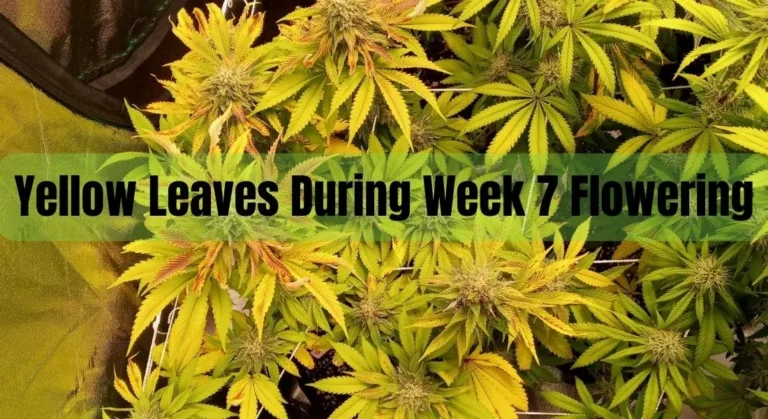Japanese Anemone Leaf Problems: Causes and Solutions
Are your Japanese Anemone leaves causing concern? You’re not alone! These lovely flowers often face various leaf issues, but with the right knowledge, you can identify and address them early. In this article, we’ll explore common Japanese Anemone leaf problems and their prevention and treatment.
Powdery mildew ranks among the most frequent leaf issues, displaying a white powdery coating that can lead to leaf drop and reduced flowering. Other problems include leaf spot, rust, and bacterial blight. These issues are manageable with proper techniques.
If you’re uncertain about the cause of your Japanese Anemone leaf problems, we’ll help you identify them. Furthermore, we’ll discuss preventive measures, such as appropriate watering and fertilization. Should you encounter leaf problems, we’ll provide effective treatment tips. By the end of this article, you’ll have the knowledge to maintain your Japanese Anemone’s beauty.
Key Takeaways
- Japanese Anemone leaves are prone to a variety of problems, including powdery mildew, leaf spot, rust, and bacterial blight.
- Proper watering and fertilization can help prevent leaf problems from occurring.
- If you do encounter leaf problems, there are effective treatments available.

Japanese Anemone Leaf Problems
However, like any other plant, they can be susceptible to problems, including leaf problems. Here are some common Japanese Anemone leaf problems and how to fix them.
Fungal Leaf Spots
One of the most common problems with Japanese Anemones is fungal leaf spots. These spots can appear on the leaves and range in color from brown to black. They can cause the leaves to yellow and drop off, which can seriously damage the plant if left unchecked.
To fix this problem, you should remove the affected leaves and dispose of them. You can also apply a fungicide to the plant to help prevent further spread of the fungus. Make sure to follow the instructions on the fungicide carefully, as some can be harmful to the plant if not used correctly.
Powdery Mildew
Another common problem with Japanese Anemones is powdery mildew. This is a fungal disease that can cause a white, powdery substance to appear on the leaves of the plant. It can also cause the leaves to curl and distort.
To fix this problem, you should remove the affected leaves and dispose of them. You can also apply a fungicide to the plant to help prevent further spread of the fungus. Make sure to follow the instructions on the fungicide carefully, as some can be harmful to the plant if not used correctly.
Leaf Miner
Leaf miners are tiny insects that can cause damage to the leaves of Japanese Anemones. They create tunnels in the leaves, which can cause them to turn brown and die.
To fix this problem, you should remove the affected leaves and dispose of them. You can also apply an insecticide to the plant to help prevent further damage from leaf miners. Make sure to follow the instructions on the insecticide carefully, as some can be harmful to the plant if not used correctly.
Aphids
Aphids are small insects that can cause damage to the leaves of Japanese Anemones. They can cause the leaves to curl and distort, and can also attract other pests to the plant.
To fix this problem, you should remove the affected leaves and dispose of them. You can also apply an insecticide to the plant to help prevent further damage from aphids. Make sure to follow the instructions on the insecticide carefully, as some can be harmful to the plant if not used correctly.
Identifying Leaf Problems
Japanese Anemones are lovely flowers that add interest to any garden. However, they are susceptible to various leaf problems that can affect their health and beauty.
In this section, we will discuss how to identify common leaf diseases and pest infestations that affect Japanese Anemones.
Common Leaf Diseases
Here are some common leaf diseases that can affect Japanese Anemones:
| Disease | Symptoms |
|---|---|
| Powdery Mildew | Powdery white spots on leaves |
| Botrytis | Grayish-brown spots on leaves |
| Fungal Leaf Spots | Brown or black spots on leaves |
| Phytopthora | Leaves turn yellow and drop off |
| Pythium | Leaves turn yellow and drop off |
| Rhizoctonia | Brown spots on leaves |
| Rust | Orange or brown spots on leaves |
| Sclerotium | Leaves wilt and turn yellow |
If you notice any of these symptoms on your Japanese Anemones, it is important to take action quickly to prevent the disease from spreading. Remove affected leaves and dispose of them in the trash. Avoid overhead watering and make sure there is good air circulation around the plants.
Pest Infestations
Japanese Anemones can also be affected by various pests. Here are some common pests that can infest Japanese Anemones:
| Pest | Symptoms |
|---|---|
| Aphids | Sticky residue on leaves |
| Spider Mites | Fine webbing on leaves |
| Slugs | Irregular holes in leaves |
| Caterpillars | Chewing damage on leaves |
| Nematodes | Stunted growth and yellowing leaves |
If you notice any of these symptoms on your Japanese Anemones, you can try using insecticidal soap or neem oil to control the pests. You can also try using physical barriers like copper tape or diatomaceous earth to keep slugs away.
By identifying common leaf diseases and pest infestations, you can take steps to keep your Japanese Anemones healthy and beautiful. Remember to monitor your plants regularly and take action quickly if you notice any problems.
Preventing Leaf Problems
If you want to enjoy the beauty of Japanese anemones without worrying about leaf problems, then you need to take proper care of your plants. Here are some tips to help you prevent leaf problems:
Proper Planting and Care
- Choose a well-draining soil: Japanese anemones prefer moist but well-draining soil. If the soil is too wet, it can lead to root rot, which can cause the leaves to turn yellow and drop off. On the other hand, if the soil is too dry, the leaves can become crispy and brown.
- Plant in a shaded area: Japanese anemones prefer partial shade. If they are planted in full sun, the leaves can become scorched and brown.
- Water regularly: Japanese anemones need regular watering, especially during hot and dry weather. Water deeply once a week, rather than giving them a light watering every day.
- Fertilize sparingly: Japanese anemones do not need much fertilizer. Too much fertilizer can cause the leaves to become soft and mushy.
Organic Pest Control
- Handpick pests: If you notice any pests on your Japanese anemones, such as aphids or spider mites, you can handpick them off the leaves. This is a safe and effective method of pest control.
- Use insecticidal soap: If you have a severe pest problem, you can use insecticidal soap. This is a safe and organic way to control pests. Simply spray the soap onto the leaves, making sure to cover both the tops and bottoms.
- Use neem oil: Neem oil is another organic pest control method. It works by disrupting the feeding and mating behavior of pests. Simply spray the oil onto the leaves, making sure to cover both the tops and bottoms.
By following these tips, you can prevent leaf problems and enjoy the beauty of Japanese anemones in your garden.
Treating Leaf Problems
If you’re experiencing issues with the leaves of your Japanese anemones, there are a few remedies you can try to help bring them back to health. In this section, we’ll cover both natural and chemical treatments.
Natural Remedies
Here are a few natural remedies that can help treat leaf problems in your Japanese anemones:
- Pruning: Pruning your plants can help increase air circulation and sunlight exposure, which can help prevent leaf problems. Be sure to remove any dead or diseased leaves or stems.
- Fertilizer: Adding a balanced, slow-release fertilizer can help promote healthy growth and prevent leaf problems. Be sure to follow the instructions carefully and avoid over-fertilizing.
- Mulch: Adding a layer of organic mulch around your plants can help regulate soil moisture and temperature, which can help prevent leaf problems. Be sure to avoid piling the mulch against the stems, as this can cause rot.
Chemical Treatments
If natural remedies aren’t working, you may need to turn to chemical treatments to help treat leaf problems in your Japanese anemones. Here are a few options to consider:
- Fungicides: If your plants are suffering from fungal diseases, such as powdery mildew or botrytis, you may need to apply a fungicide. Be sure to follow the instructions carefully and avoid spraying during hot, dry weather.
- Insecticides: If your plants are being attacked by pests, such as aphids or spider mites, you may need to apply an insecticide. Be sure to choose a product that is safe for your plants and follow the instructions carefully.
- Herbicides: If your plants are being crowded out by weeds, you may need to apply a herbicide. Be sure to choose a product that is safe for your plants and follow the instructions carefully.
Remember, prevention is key when it comes to leaf problems in your Japanese anemones. Be sure to provide your plants with the proper care and maintenance to help prevent issues from arising in the first place.
Frequently Asked Questions (FAQs)
Can Japanese Anemone leaf problems be prevented?
While it’s impossible to prevent all leaf problems, you can reduce their likelihood by providing the right growing conditions, practicing good hygiene, and monitoring your plants closely for early signs of trouble.
How often should I inspect my Japanese Anemone plants for leaf problems?
It’s a good idea to inspect your plants at least once a week, but I often find myself giving them a quick once-over every day while watering or tending to other garden tasks. The sooner you spot a problem, the easier it is to tackle.
Can Japanese Anemones recover from leaf problems?
Absolutely! With the right care and attention, Japanese Anemones can bounce back from leaf problems. However, it’s essential to act fast and provide the necessary treatment to help your plants recover.
Conclusion
Just like any garden warrior, your Japanese Anemones may occasionally face some leaf-related challenges. But fear not, with a little knowledge, vigilance, and TLC, you can help your plants triumph over adversity and keep your garden looking stunning.
Remember, the key to success is understanding the potential problems, addressing them promptly, and providing the right growing conditions. With practice and patience, you’ll become a Japanese Anemone slayer in no time. Good luck, and happy gardening!
Related Posts:




